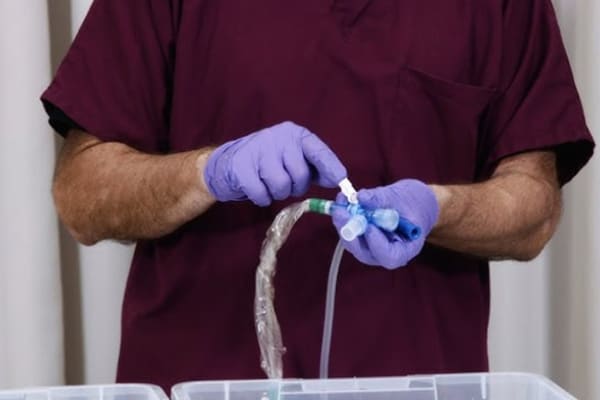Sterilizing medical equipment is crucial to maintaining a safe and effective healthcare environment, and this is especially true for devices like ventilators. Ventilators are life-support systems that help patients breathe, and their circuits—composed of tubing, connectors, and other components—come into direct contact with the patient’s respiratory system. Proper sterilization of ventilator circuits is essential to prevent infections and ensure the safety of both patients and healthcare workers. This article explores the steps and methods involved in sterilizing a ventilator circuit, focusing on the importance of using a Ventilator Circuit Sterilizer.
Understanding the Need for Sterilization
Ventilator circuits are at high risk of contamination due to their contact with respiratory secretions and other bodily fluids. If not properly sterilized, these circuits can harbor bacteria, viruses, and other pathogens, leading to serious healthcare-associated infections (HAIs) like ventilator-associated pneumonia (VAP). Therefore, rigorous sterilization protocols are vital to eliminate these pathogens and protect patient health.
Methods of Sterilizing a Ventilator Circuit
There are several methods for sterilizing ventilator circuits, and the choice of method often depends on the type of circuit, the materials used, and the resources available in the healthcare facility. Below are the most common methods:
1. Using a Ventilator Circuit Sterilizer
A Ventilator Circuit Sterilizer is a specialized device designed specifically to sterilize ventilator circuits. These sterilizers use a combination of high heat and steam to kill bacteria, viruses, and other microorganisms. The process involves placing the ventilator circuit into the sterilizer chamber, where it is exposed to high-pressure steam at temperatures typically ranging from 121°C to 134°C. The high temperature and pressure ensure that even the most resistant pathogens are destroyed.
Ventilator Circuit Sterilizers are highly effective and can be used for both reusable and some single-use circuits, depending on the manufacturer’s guidelines. They are particularly advantageous in busy healthcare settings due to their efficiency and ability to handle multiple circuits at once.
2. Chemical Sterilization
Chemical sterilization involves using liquid chemical solutions, such as hydrogen peroxide, glutaraldehyde, or peracetic acid, to sterilize ventilator circuits. This method is suitable for circuits made of materials that cannot withstand high heat. The process requires the ventilator circuit to be immersed in the chemical solution for a specified period, allowing the chemicals to penetrate and kill any microorganisms.
While chemical sterilization is effective, it requires careful handling to avoid exposure to toxic substances. It also necessitates thorough rinsing to remove any chemical residues that could be harmful to patients.
3. Gas Sterilization
Gas sterilization uses gases like ethylene oxide (EtO) to sterilize ventilator circuits. EtO is a powerful sterilant that can penetrate the tiny crevices and lumens of ventilator circuits, ensuring comprehensive sterilization. The process involves placing the ventilator circuit in a sealed chamber where it is exposed to ethylene oxide gas at low temperatures.
This method is effective for heat-sensitive materials but requires adequate aeration afterward to remove any residual gas that could be toxic to patients and staff. The entire process can take several hours to complete, making it less suitable for urgent situations.
4. UV Sterilization
Ultraviolet (UV) sterilization is an alternative method that uses UV-C light to kill microorganisms on the surface of the ventilator circuit. UV sterilization is quick and does not involve heat or chemicals, making it suitable for circuits that are sensitive to these conditions.
However, UV light only disinfects surfaces directly exposed to it, so it may not be as effective for parts of the circuit with complex geometries or internal pathways. It is often used in conjunction with other sterilization methods to ensure a thorough sterilization process.

Best Practices for Sterilizing Ventilator Circuits
To ensure the effective sterilization of ventilator circuits, healthcare facilities should follow best practices:
- Follow Manufacturer’s Instructions: Always refer to the manufacturer’s guidelines for sterilizing ventilator circuits. These guidelines provide specific instructions based on the materials and design of the circuit.
- Use the Appropriate Sterilization Method: Choose a sterilization method that is compatible with the ventilator circuit materials and the pathogens being targeted. Not all methods are suitable for all types of circuits.
- Ensure Thorough Cleaning Before Sterilization: Before sterilizing, thoroughly clean the ventilator circuit to remove any visible dirt, debris, or organic matter. This step is crucial because any residue can shield microorganisms from the sterilization process.
- Regularly Test Sterilization Equipment: Regularly check and maintain sterilization equipment, such as the Ventilator Circuit Sterilizer, to ensure it is functioning correctly and effectively killing pathogens.
- Implement Standard Operating Procedures (SOPs): Establish and adhere to SOPs for the sterilization of ventilator circuits, including proper handling, storage, and documentation of sterilization cycles.
Conclusion
Sterilizing ventilator circuits is a critical component of infection control in healthcare settings. Utilizing a Ventilator Circuit Sterilizer and other sterilization methods effectively eliminates harmful pathogens and ensures patient safety. By following best practices and choosing the appropriate sterilization technique, healthcare facilities can minimize the risk of infection and provide a safer environment for both patients and staff.